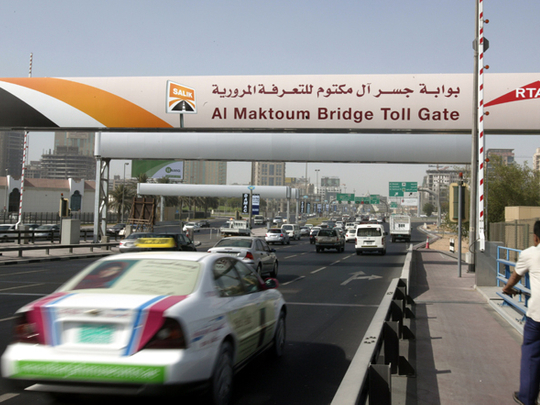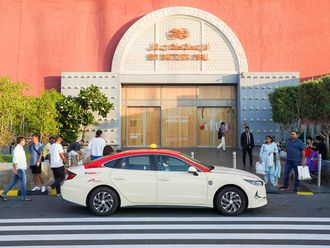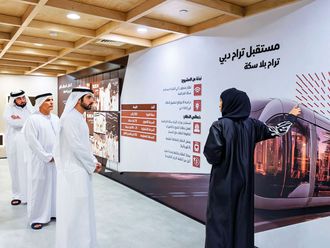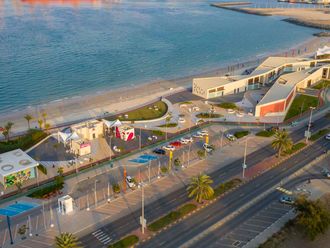
Dubai: The Roads and Transport Authority (RTA) has identified two more roads in Dubai to install Salik toll gates to ease traffic congestion, Gulf News has learnt.
One of the proposed locations to have a Salik toll gate is Al Ittihad Road near Dubai Police headquarters and second location is in Al Ghusais, according to a senior official.
"The locations to have two more Salik gates have been finalised following a comprehensive study of roads and traffic movement in Dubai," he added.
However, he made it clear that so far no final decision has been taken to install the Salik toll gates.
"Though there is no immediate plan to have more Salik gates, we have already identified the locations to install more gates. The gates will be installed only if the higher authorities approved the plan and give green signal," he said. So far, no dates have been set to install new Salik toll gates.
Dubai was the first city in the region to introduce the road toll system in July 2007. Initially, two toll gates were installed one each on Shaikh Zayed Road near the Mall of the Emirates (Al Barsha) and the Shaikh Rashid Road on Al Garhoud.
The RTA installed two more, one each, on Al Maktoum Bridge and Shaikh Zayed Road between the First and Second Interchanges in 2008. A motorist is charged Dh4 for passing through Salik gate every time. There is a maximum charge of Dh24 per day.
"Salik is a part of integrated solutions that aims to reduce traffic. These solutions comprise road projects and infrastructure; metro systems; public transport and marine transport that encourage the use of public transport to reduce traffic jams in Dubai," Mattar Al Tayer, Chairman of the Board and Executive Director of the RTA, had said in an earlier statement.
According to the RTA studies, Salik toll system has not only helped reduce traffic congestion on the busiest highway in Dubai — Shaikh Zayed Road — but has also become one of the major sources of income for the RTA.
Income
The RTA collected around Dh800 million from Salik toll gates in 2010. Salik revenue in two and half years from July 2007 to December 2009 was Dh1.658 billion.
The Salik income increased to Dh776 million in 2009 whereas it was Dh669 million in 2008 and Dh214 million in 2007 (six months from July to December).
The RTA report says that the Salik toll system has proved to be a huge success as this has led to easing traffic flow on Shaikh Zayed Road and bridges on the Dubai Creek, which would remain choked with traffic jams before the introduction of the system.
The report says that the average speed on Shaikh Zayed Road also increased by 30 per cent whereas some 45 per cent of traffic has reduced on the Salik-controlled Al Garhoud Bridge and 30 per cent on Al Maktoum Bridge.
The RTA report says the authority is expected to increase its revenue to Dh5 billion by 2013. Its revenue was Dh1.2 billion in 2006 whereas its annual budget was Dh3.3 billion
The authority's budget for the year 2010 was Dh10.7 billion.
Plans: Focus on finance
Mattar Al Tayer, Chairman of the Board and Executive Director of the Roads and Transport Authority (RTA) in Dubai, stressed that the focus of the RTA over the forthcoming period would be on three key perspectives including achieving financial sustainability, environmental sustainability and the efficient use of information.
Addressing a meeting of senior RTA officials, Al Tayer said: "The financial sustainability perspective includes enhancing the financial efficiency through identifying the elements of costs and computing each of them accurately, applying the financial costs model circulated by RTA Finance Department to all the RTA Agencies and Sectors, and cooperating with the teams and sub-committees of the Supreme Fiscal Policies Committees, namely: the Cost Reduction Team, Revenue Growth Team, Power Saving Team, and Manpower Planning Team at the RTA.
The second perspective, Environmental Sustainability, includes showcasing the RTA and affiliated agencies as environment-friendly entities through the proper marketing of initiatives that serve and promote this perspective within the existing resources.
The third perspective on which RTA will focus over the next stage relates to the effective use of information. RTA has invested huge resources in introducing and upgrading programmes and diverse electronic systems to support its business operations.
Have Your Say
What do you think of this? Will this ease traffic on those roads? Tell us what you think.










